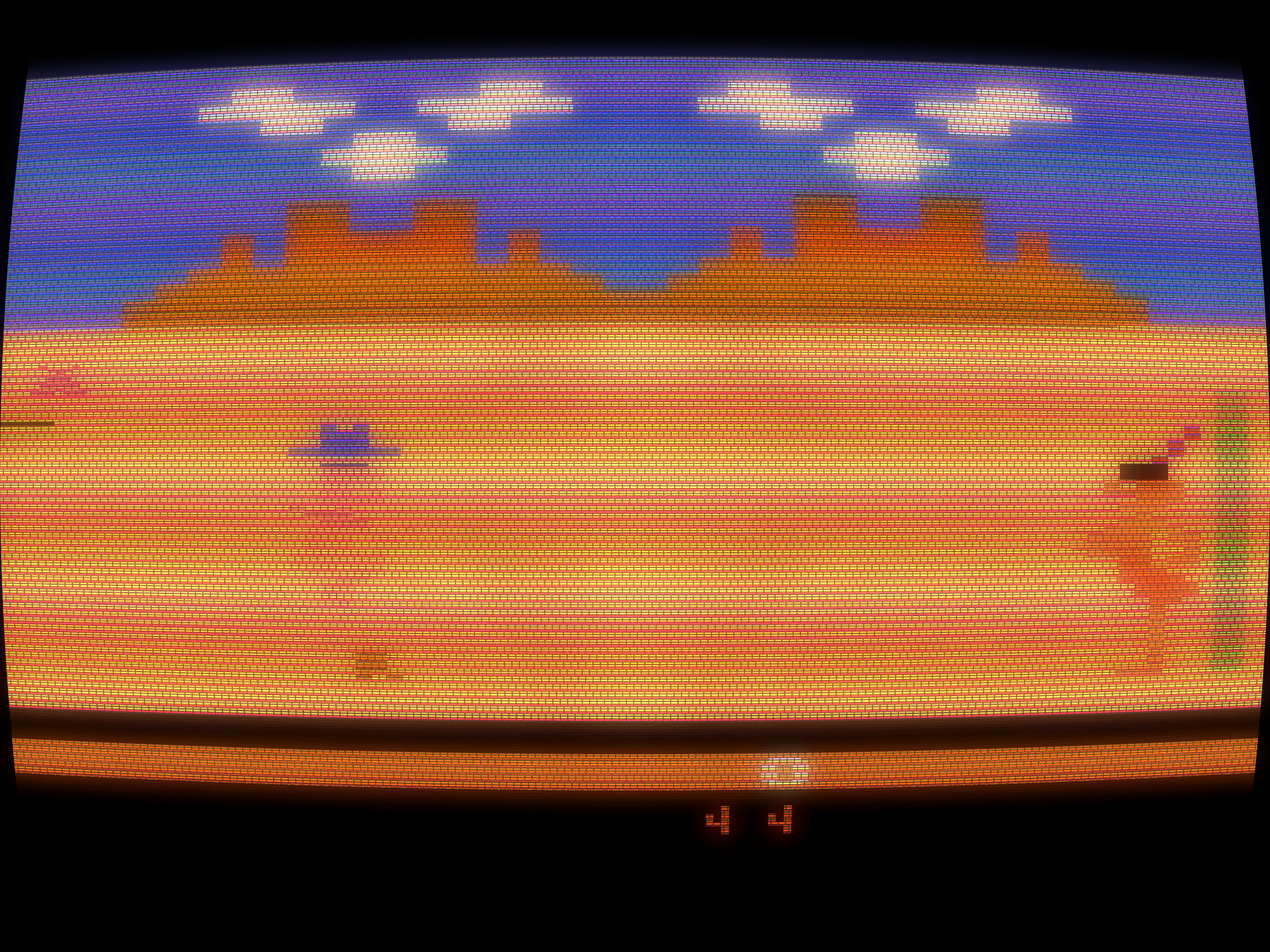 The Game: As a rude, crude, lewd nude dude in cavalry boots and hat, your mission is to avoid a hail of airborne arrows, make your way over to an Indian maiden tied to a pole, and have your way with her. That’s the game. Replay value and any actual titillation value not included. (Mystique, 1983)
The Game: As a rude, crude, lewd nude dude in cavalry boots and hat, your mission is to avoid a hail of airborne arrows, make your way over to an Indian maiden tied to a pole, and have your way with her. That’s the game. Replay value and any actual titillation value not included. (Mystique, 1983)
Memories: Before Night Trap, before Grand Theft Auto Vice City, and before those X-rated Playstation “virtual sex games” marketed in far east countries, there was Custer’s Revenge, a smelly dog of a game which was the first attempt to portray sex in a video game. The problem was, it wasn’t just sex. Custer’s Revenge portrayed rape, and did so against the backdrop of one of American history’s most controversial chapters. The National Organization for Women wasn’t happy. Native American organizations were even less happy. And were it possible to be even less happy than that…well, that’s where you’d find the rape victims’ advocacy groups.
And everybody ganged up on…Atari. Surely, if games were being made for Atari’s hardware, they had some say on the content of the software?
Not really. None whatsoever, actually.
 When four disgruntled game designers split from Atari’s ranks to form Activision in 1999, the first game they became involved in was a protracted legal battle with their former employer. As far as Atari was concerned, Activision’s founding members had stolen trade secrets and had to be stopped. But in court, Atari over-reached itself, trying to stop a third-party software market from forming – and the judge didn’t see it Atari’s way. As a result, the only concession Atari won was a royalty for the use of the Atari name – necessary if, for example, you wanted the packaging of your company’s new game to let consumers know that it would work on the Atari 2600. In the late 80s, Nintendo figured out a better system: all third-party software had to be licensed through them, giving Nintendo the power of veto on content grounds. That approach survived prolonged scrutiny for anything that might be violating antitrust laws, but like any decent-sized computer company based in Redmond, Washington, Nintendo was cleared of any wrongdoing.
When four disgruntled game designers split from Atari’s ranks to form Activision in 1999, the first game they became involved in was a protracted legal battle with their former employer. As far as Atari was concerned, Activision’s founding members had stolen trade secrets and had to be stopped. But in court, Atari over-reached itself, trying to stop a third-party software market from forming – and the judge didn’t see it Atari’s way. As a result, the only concession Atari won was a royalty for the use of the Atari name – necessary if, for example, you wanted the packaging of your company’s new game to let consumers know that it would work on the Atari 2600. In the late 80s, Nintendo figured out a better system: all third-party software had to be licensed through them, giving Nintendo the power of veto on content grounds. That approach survived prolonged scrutiny for anything that might be violating antitrust laws, but like any decent-sized computer company based in Redmond, Washington, Nintendo was cleared of any wrongdoing.
None of which would help Atari – it just means that a game like Custer’s Revenge wouldn’t have happened on the NES…at least not with Nintendo’s licensing, the circumvention of which would bring an even bigger lawsuit.
In the meantime, Atari did its best to fend off the protests from a public that didn’t understand the difference between who made the hardware and who made the software. And Mystique continued releasing supposedly X-rated games (though it’s hard to envision anyone popping a woody for the pixelated porn of Custer’s Revenge) like Beat ‘Em & Eat ‘Em and Bachelor Party, though it closed up shop a year or so later.
 The game play of Custer’s Revenge is laughable at best, and as was the case when it was originally released, it’s a collector’s item only due to its notoriety. Quite a few copies exist, though – the backlash against the game backfired, giving Mystique’s “Swedish Erotica” line of video games more publicity than they would have had without the protests.
The game play of Custer’s Revenge is laughable at best, and as was the case when it was originally released, it’s a collector’s item only due to its notoriety. Quite a few copies exist, though – the backlash against the game backfired, giving Mystique’s “Swedish Erotica” line of video games more publicity than they would have had without the protests.




